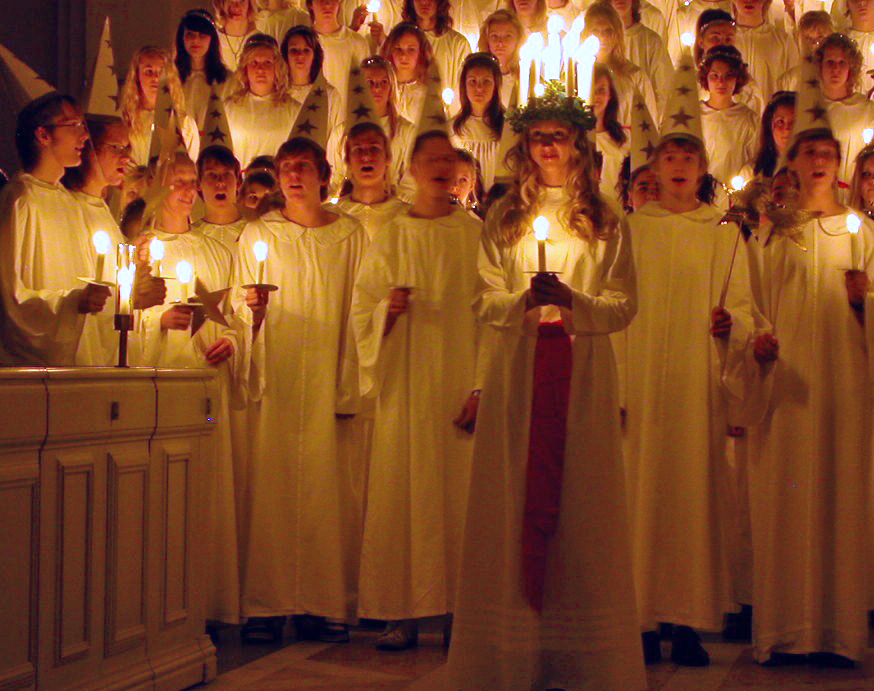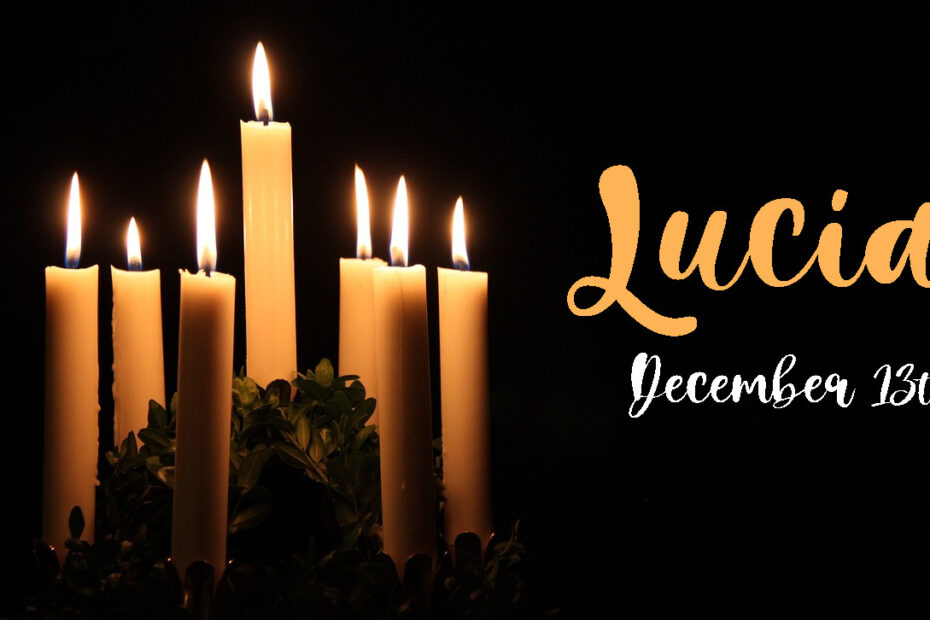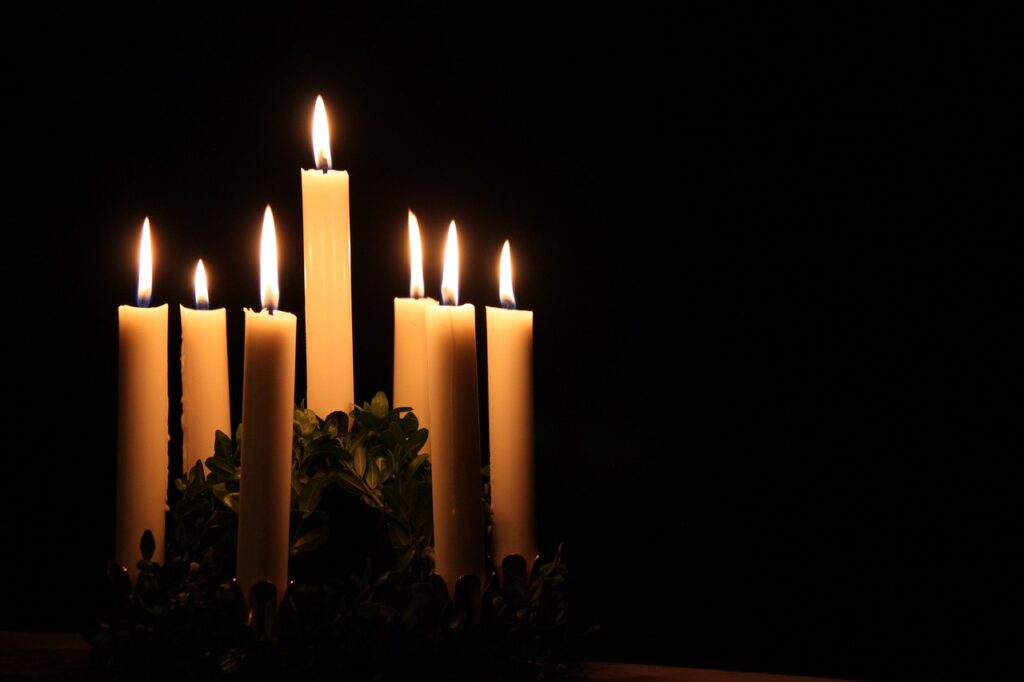As a girl growing up in Sweden, St Lucy’s day or Lucia, naturally became a big part of my Advent. On December 13th the young people of the area would dress in white and perform the old Lucia and Christmas songs in the local church by candlelight. My first time being part of the procession was when I was 4 years old, though of course we toddlers were only carrying electrical candles.
After moving away to England 7 years ago, we kept the tradition of singing a few songs at home, and baking our version of the customary Lussebullar: since we prefer the taste, we simply make Cinnamon rolls, but roll them into the traditional s-shape required.
This year I found out that there are actually one or two Lucia events in London, but unfortunately it was too far away for me to attend weekly rehearsals.
Then last week, on an impulse, I sewed myself a white Lucialinne, the simple white shift dress worn for the festivities, which really resembles and Edwardian nightgown. Since it’s impossible to buy them here, and the dress is a really simple one, I decided to just make one, even though I wouldn’t be wearing it anywhere. Unfortunaltey I couldnt find a Luciakrona, the candle crown anywhere, and it was impossible to build one. They need to be quite sturdy and are usually made of metal, with either 5 or 7 candles. Often the bare metal is then wrapped in evergreens and secured with red ribbon. I did however make a normal wreath like the one worn by Lucia’s followers to complete the look.
I ended up shooting this short video, to capture the mood of the season:
Lucia: Symbolism and Backstory
The name Lucia or Lucy can mean light, and that together with her feast day on December 13th in the dark of winter helped her gain popularity in Scandinavia, especially in Sweden, where her feast day is celebrated as the Night of Light. Lucia is dressed in a long white gown (feel free to be creative with white skirts and long-sleeve blouses) with a red ribbon or sash tied around the waist, the ends falling down the front of the dress. Naturally the real St Lucy of Syracuse would not have dressed like that, the Lucia costume could be symbolical of her attributes (white=virginity, red=martyrdom), as well as being a crossover with a Christmas angel.
The first evidence of a a white-clad Lucia dates back to the 18th century, where she was depicted with angels wings, and carrying candles in both hands. However Lucia as a public holiday only came into fashion in the 1950s, in connection with the crowning of the towns Lucia, similar to a beauty pageant.
Men also participate in the Lucia procession and choir, usually as Stärngossar (star boys) inspired by the three wise men.

Ideas to Celebrate Lucia from Home In Style
- Watch a Lucia procession online (see a few of my favourites below)
- Bake Lussebullar and serve with mulled wine or cardamon coffee
- Light up your backyard (or a part of the forest) with candles – extra points for snow!
- Dress as Sankta Lucia or a Stärngosse and serve your family and friends cakes or pastries
- Sing “Sankta Lucia”



 Subscribe AroundTheYear
Subscribe AroundTheYear